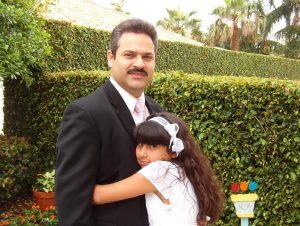Lesieli Heimuli, a student in Professor Stephen Ruf’s Digital Storytelling class, produced this time capsule celebrating her Tongan culture.
Defining Culture from SAU Journalism/Communication on Vimeo.
Exploring Race, Gender, and Unity in the Adventist Church
Lesieli Heimuli, a student in Professor Stephen Ruf’s Digital Storytelling class, produced this time capsule celebrating her Tongan culture.
Defining Culture from SAU Journalism/Communication on Vimeo.

By Gia Arroyo
It is difficult to remember what life was like before my dad was a pastor. There is no point in me trying to recall because I was so small when he started.
My life has always been surrounded by church-related events — the whole routine of constantly being part of a congregation is normal.
The memories include spending hours after school in the sanctuary doing homework while my dad was in meetings, my dad stepping out and driving me to the McDonald’s across the street, and then rushing back to a meeting.
Once I finished my homework, I’d crawl under the church pews and count how many pieces of gum were stuck underneath. Sometimes I’d quietly stand behind the pulpit and mimic my dad.
Sabbath mornings were a rush for me. I would wake up early and leave for church with my father. I would follow him as he passed by each Sabbath School class, wishing everyone a “Happy Sabbath.”
My mother and I always sat in the front row to listen Dad preach. I loved how passionate he got when he’d read a verse. His analogies were often silly, but they helped get his point across. His energy behind the pulpit was something I looked up to.
Last year, my Dad decided to look for a slower-paced occupation. For the sake of his wellbeing and health, he wanted a 9 to5 job. A part of me was very happy for him. He was a hard worker and deserved to disconnect from work when he got home.
The other half of me took it really hard.
If I’m being honest, I still haven’t accepted it. Being a pastor’s kid was a part of my identity. My father’s retirement from pastoring was a tough pill for me to swallow.
It happened at the same time that was getting ready to leave for SAU. So, I was faced with a challenge once I arrived at Collegedale. What is church without my dad?
Any church without him seemed bleak. I wasn’t interested in going. I only went to vespers ’cause I needed the credit.
There was not a connection between God and me. So I stopped going to church for a year and a half. I wasn’t open to looking for a new church home because I believed I wouldn’t find one that made me feel good.
But, during this time away from church, I began to feel the negative impact of not going.
My goal for 2019 is to go back to church. Although we’re only a couple months into the year, I have been consistently church-hopping and trying to find my place.
I wish I could say that this story has a perfect ending, but I guess it doesn’t — at least not yet.
I am trying to be consistent, but my motivation to attend services comes in waves. I realize that I need to take care of my relationship with God. I’m determined to go to church.
I just have to learn to appreciate church without my dad.

Sitting in the nosebleed section of the Edward Jones Dome in St. Louis, Missouri, my eyes panned the spectacular pageantry below. Nationals from across the globe decked in traditional garb. Colorful flags floating gracefully across the stage. Faces beaming with pride for church and country.
For attendees of the 2005 General Conference Session of Seventh-day Adventists, it was the moment that we had all been waiting for – a Parade of Nations to celebrate Adventism’s global diversity, and we were not disappointed.
From Panama to Papua New Guinea, Mongolia to Mozambique, Nigeria to New Zealand, representatives from each of the denomination’s 13 divisions paraded on stage to much pomp and circumstance, as compatriots in the bleachers cheered enthusiastically for their countries.
However, no group shouted louder than Seventh-day Adventists from the English- and French-speaking Caribbean, who let out a collective roar when Jamaica, Haiti and Guyana were called. That is when my eyes first opened to the true impact of Adventism in the Caribbean basin, the region of the denomination’s greatest success, according to some experts.
I am a fourth generation Adventist, with roots in Nevis and Antigua, where my great-great grandparents were among the first on their islands to embrace the Adventist faith. I am also a curious journalist who has written extensively about race, demographics and Caribbean culture over the decades.
I witnessed the demographic changes within the Adventist denomination first-hand, and I have long wanted to document them in a way that enhances the discussion about race, not only in the church but also in America generally.
Now, as an assistant professor at Southern Adventist University, I have the privilege of conducting this research with an amazing group of students.
Through “Investigating Diversity: Exploring Race, Gender and Unity in the Adventist Church,” we begin that journey